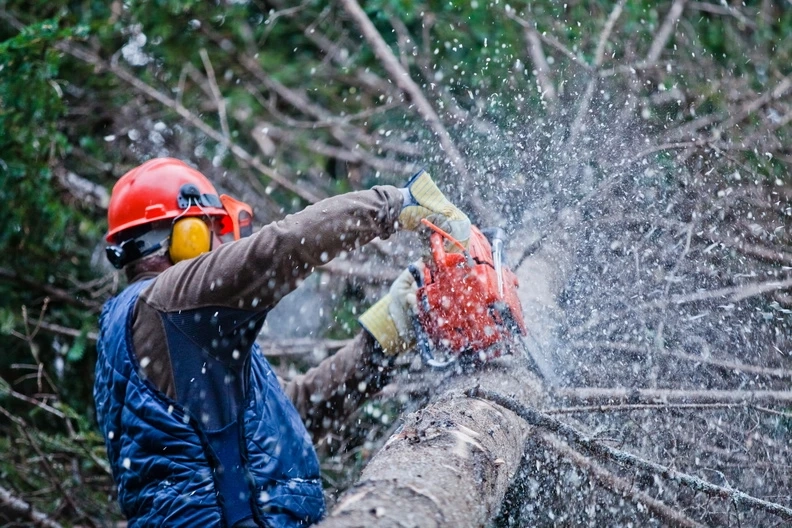Tree clearance, also known as tree removal or land clearing, is a process that involves the removal of trees and other vegetation from a specific area. This practice is often undertaken to make way for agricultural activities, construction projects, or to manage and maintain ecosystems. While the idea of cutting down trees may initially seem detrimental to the environment, tree clearance, when done responsibly, offers numerous benefits.
What is Tree Clearance?
Tree clearance is the systematic removal of trees, shrubs, and other vegetation from a designated area. This can be a small-scale activity, such as clearing a few trees from a residential property, or a large-scale operation, like clearing vast tracts of forest for agricultural development or infrastructure projects. The methods employed in tree clearance can range from manual cutting and removal to the use of heavy machinery like bulldozers and chainsaws.
The process typically involves several stages, including:
Assessment and Planning: Before any clearing begins, a thorough assessment of the area is conducted. This involves identifying the types of trees and vegetation present, understanding the local ecosystem, and determining the best approach to minimize environmental impact.Obtaining Permits: Depending on the location and scale of the clearance, various permits and approvals may be required from local authorities. These permits ensure that the clearance is done legally and sustainably.Clearing and Removal: The actual removal of trees and vegetation is carried out using appropriate methods and equipment. Safety measures are implemented to protect workers and the surrounding environment.Disposal and Recycling: After the trees are removed, the debris is either disposed of responsibly or recycled. Wood can be repurposed for various uses, such as timber, mulch, or biomass fuel.Benefits of Tree Clearance
Despite the potential environmental concerns, tree clearance, when done responsibly and sustainably, offers several significant benefits:
1. Agricultural Development
One of the primary reasons for tree clearance is to convert forested land into agricultural fields. This practice allows for the expansion of farmland, enabling farmers to grow more crops and support local food production. In regions where food security is a concern, clearing land for agriculture can be vital for sustaining communities and reducing dependency on food imports.
2. Urban Development and Infrastructure
Tree clearance is essential for urban development and the construction of infrastructure projects, such as roads, bridges, and buildings. As cities expand, there is a growing need for land to accommodate residential, commercial, and industrial developments. Responsible tree clearance ensures that these projects can proceed while balancing environmental considerations.
3. Fire Prevention and Management
In areas prone to wildfires, tree clearance can play a crucial role in fire prevention and management. By creating firebreaks and reducing the density of vegetation, the risk of wildfires spreading uncontrollably can be minimized. This proactive approach helps protect lives, property, and natural resources.
4. Ecosystem Management
Tree clearance can also be beneficial for ecosystem management. In some cases, invasive species may dominate an area, outcompeting native plants and disrupting local biodiversity. Strategic tree clearance can help restore the balance of ecosystems by removing invasive species and allowing native vegetation to thrive.
5. Economic Opportunities
The wood and timber industry significantly contributes to the economy. Tree clearance provides raw materials for various industries, including construction, furniture making, and paper production. This, in turn, creates jobs and supports local economies. Additionally, cleared land can be repurposed for tourism, recreation, and other economic activities.
6. Improved Land Utilization
Clearing land of trees and vegetation can improve its usability for various purposes. For instance, land that is prone to flooding or erosion may benefit from clearance and subsequent stabilization measures. This can enhance the land's value and suitability for different uses, such as grazing, farming, or development.
7. Health and Safety
In some situations, tree clearance is necessary to ensure the health and safety of communities. Dead or diseased trees can pose significant risks, including falling branches or trees that can cause injury or damage property. Clearing these hazardous trees helps create a safer environment for residents and reduces the likelihood of accidents.
Responsible Tree Clearance Practices
To ensure that the benefits of tree clearance are realized without causing undue harm to the environment, it is essential to follow responsible practices. This includes:
Sustainable Planning: Thoroughly assess the environmental impact and plan the clearance to minimize ecological disruption.Legal Compliance: Adhering to local regulations and obtaining necessary permits to ensure the clearance is conducted legally.Reforestation and Rehabilitation: Implementing reforestation or habitat restoration projects to mitigate the loss of trees and support biodiversity.Community Engagement: Involving local communities in the planning process to address their concerns and incorporate their input.Tree clearance, when conducted responsibly, offers a range of benefits that support agricultural development, urbanization, fire prevention, ecosystem management, economic growth, and community safety. By adhering to sustainable practices and legal requirements, it is possible to balance the needs of development with the imperative to protect and preserve our natural environment. In this way, tree clearance can contribute to the well-being of both human and ecological communities.


